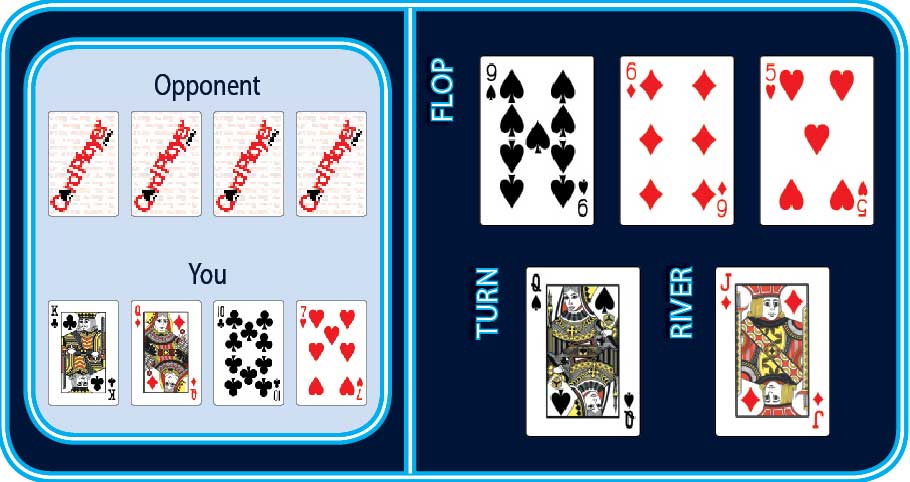






Pot-Limit Omaha QuizPlaying with the initiative, making a combination-call, and value-betting the riverby Jeff Hwang | Published: Mar 06, 2009 |
|
|
It's a five-handed 50¢-$1 pot-limit Omaha game online (six-max). You ($100) are dealt the K Q
Q 10
10 7
7 on the button.
on the button.

1. The under-the-gun player ($90) limps in. The cutoff folds. You should:
a. Fold
b. Call
c. Raise
Action: You raise to $4.50. Both blinds fold. The limper calls.
Flop ($10.50): 9 6
6 5
5 . Your opponent checks.
. Your opponent checks.
2. You should:
a. Check
b. Bet
Action: You check.
Turn ($10.50): Q . Your opponent bets $10.50.
. Your opponent bets $10.50.
3. You should:
a. Fold
b. Call
c. Raise
Action: You call.
River ($31.50): J . Your opponent checks.
. Your opponent checks.
4. You should:
a. Bet $5 to $10
b. Bet $15 to $20
c. Bet $25 to $31.50
Grades and Analysis
1. a(0), b(10), c(10)
You have three Broadway cards and a semi-connected card that helps make a nut straight (10-7 makes a nut straight, so the 7 is not a complete dangler), and you have good high-card strength. You are definitely playing the hand, and limping in or raising are equally strong choices depending on your opponents. If the blinds are tight players and the limper is a weak player, raising the max to try to isolate him may be the preferred play.
If the blinds are loose and will call any raise, limping in may be the better option. Also, if the 7 were instead a 6 (a complete dangler), I would lean toward limping in rather than raising.
2. a(10), b(2)
With a nut gutshot-straight draw, you should take the free card here rather than continuation-bet, as you do not want to get check-raised off this draw. Moreover, a lot of help could arrive on the turn; for example, a jack would give you a 13-card nut wrap, while a queen or king would give you a pair and a double-nut gutter.
3. a(0), b(10), c(2)
You can't fold here for one bet with top pair and a double-nut gutter, even with the two spades on the board. Your queens may be the best hand, and even if not, you have a lot of outs (two pair or trips may win, as well). Meanwhile, you don't want to raise here and bloat the pot, or have to fold to a reraise. This spot calls for a combination-call.
4. a(2), b(5), c(10)
You have the nuts. As a general rule, the less scary the board, the more you should bet. As it is, the jack completes probably the least likely straight, so you should tend to make a bigger bet; had the river been a king or an 8 (completing an open-end straight draw), you might be more inclined to bet less - maybe half the pot in the case of the king, and perhaps even less in the case of the 8 (which also puts four cards to a straight on the board).
In the actual hand, I bet the pot ($31.50), and my opponent called with 9-9-X-X, having flopped a set of nines. 
Jeff Hwang is a semiprofessional player and author of Pot-Limit Omaha Poker: The Big Play Strategy. He is also a longtime contributor to the Motley Fool, and the publisher of Ask J. Boz: The Average Joe's Guide to Women. You can check out his website at jeffhwang.com.